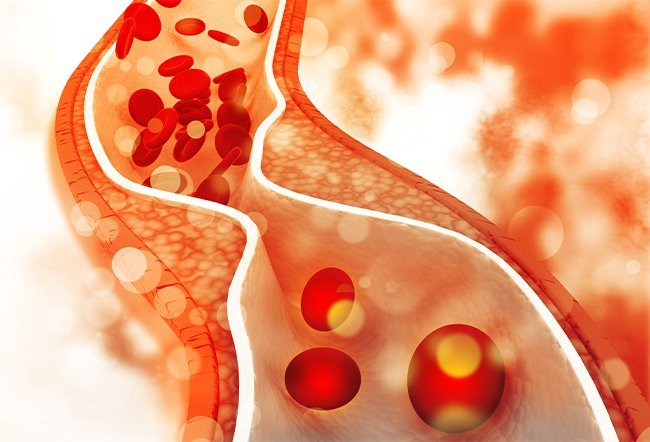What Are the Symptoms of Critical Limb Ischemia?

Critical limb ischemia (CLI) is a severe obstruction in the arteries of the hands, feet, or legs that reduces blood flow to those areas.
The main symptom of critical limb ischemia is ischemic rest pain, or pain in the legs and feet even when you are not moving, as well as non-healing skin ulcers and gangrene.
- Ischemic rest pain: Rest pain is a burning pain in the ball of the foot and toes that can cause you to wake up in the middle of the night. Sleep can exacerbate the pain due to a lack of gravity-assisted blood flow to the foot, as it is the farthest from the heart and arteries. Patients who keep their legs straight during sleep may often have swelling of the feet and ankles. Hanging your legs over the edge of the bed or walking around can relieve rest pain.
- Non-healing sores: Non-healing sores are usually caused by injury or ill-fitting shoes and fail to respond to 4-12 weeks of treatment, including regularly dressing the sores, avoiding trauma, treating infection, and scraping dead tissue.
- Gangrene: Gangrene develops on the toes when blood supply is so low that the tissues in the legs, feet, and hands die due to a lack of oxygen.
Other symptoms of CLI include:
- Thickening of toenails
- Toe or foot sores, infections, or ulcers
- Visible decrease in the temperature of the lower extremities
- Shiny, smooth, dry skin on the legs or feet
- No or weak pulse in the legs or feet
- Hair loss or slower hair growth on the legs or feet
- Erectile dysfunction in men
When to see a doctor
If you experience leg pain and numbness, seek medical help instead of dismissing it as a part of aging. The following people should undergo screening even if they have no symptoms of critical limb ischemia:
- Over the age of 65
- Age 50 with a family history of diabetes or smoking
- Under the age of 50 with diabetes or other risk factors, including obesity and high blood pressure
What causes critical limb ischemia?
Atherosclerosis is the main cause of critical limb ischemia. Atherosclerosis is a condition in which plaques form on the arteries, leading to reduced blood supply.
Although atherosclerosis usually develops in the blood vessels of the heart, the disease can also affect arteries in other parts of the body. When atherosclerosis obstructs blood flow to the lower extremities, this condition is called critical limb ischemia.
Other causes of CLI may include:
- Blood vessel inflammation
- Injury to legs
- Radiation exposure
- Problems in the structures of ligaments and muscles
What are risk factors for critical limb ischemia?
Several factors can increase the risk of CLI, including:
- Smoking
- Diabetes
- High cholesterol levels
- High blood pressure
- Obesity
- Age over 65
- Family history of critical limb ischemia, heart disease, or stroke
- High levels of homocysteine
How is critical limb ischemia treated?
Risk factor modifications can help reduce the symptoms of critical limb ischemia:
- Smoking cessation
- Blood pressure control
- Reduction of cholesterol level
- Controlling blood sugar level
- Reducing weight
- Regular physical exam
Medications administered to control CLI include:
- Cholesterol-lowering medications
- Hypertensive medications
- Anticoagulants or blood thinners
Surgical options to treat CLI include:
- Angioplasty
- Bypass surgery
- Thrombolytic therapy
- Amputation
Critical limb ischemia should be treated immediately. If pain medications fail to respond after 4-8 weeks of therapy, your doctor may suggest surgery or amputation. If non-healing sores or gangrene reveal the presence of infection, your doctor may prescribe antibiotic therapy or surgical scraping of dead tissues in the wound.
